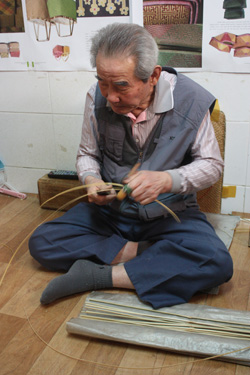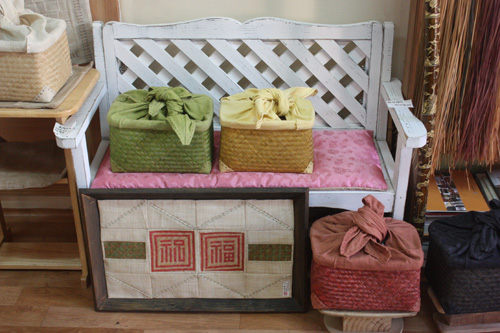중요무형문화재 제53호 서한규 채상장
Chaesang: Korean Traditional Bamboo Weaving Art
By Pyun Ja-seong, Tribune Reporter
Damyang is famous for its bamboo trees and products such as bamboo fans, mats and Dutch wives. Did you know that there is also a colorful Korean bamboo box called Chaesang? Most people are not familiar with it even having been to Damyang before. So what is Chaesang and what is it for?
Chaesang was used either for keeping clothes, as a sewing box, or a substitute for a jewel box. As “Chae” means color and “Sang” means a box, the literal meaning of the word is a colorful box. Every step of the bamboo box making process is handcrafted with delicate care by a craftsman of Chaesang known as Chaesangjang. This makes the price of the Korean bamboo box high, which is why it has been considered an ornament for rich people since ancient times. For example, in the Joseon Dynasty period, Chaesang was regarded as one of the marriage requirements for a well-bred young lady of Yangban, an aristocrat with much power and money.

Throughout Korea, China and Japan there is only one master artisan of Chaesang left, and he lives in Korea. His name is Chaesangjang Seo Han-gyu, Important Intangible Culture Properties of Korea No. 53. At the age of 16, the artisan Seo first started making bamboo mats and fans to make a living. He said, “When I was young, most residents in this village earned money on the side by making bamboo products such as fans, Satgat (hat) and baskets.” Around that time, he found a 110-year-Ham (box of wedding gifts) that his grandmother brought when she got married, and this was the beginning of his job-for-life. As there was no teacher who could teach how to make these colorful Korean bamboo boxes, he had to practice on his own by re-creating his grandmother’s Ham dozens of times. He also designed patters for the bamboo box for himself. As a result of his lifelong effort, we can still enjoy the beauty of Chaesang.
How does one make this elegant box? The work begins with stripping the skin of a bamboo tree. Mr. Seo specifically insists on using the bamboo called Wangdae because the quality and the hardness of the bamboo is proper for workmanship. Using his teeth the master peels off the bamboo skin and keeps it soaked in water, and then he arranges it like thin paper with a knife. The next step is to dye it with various natural pigments such as indigo, cape and jasmine. In the past, he used only four colors for dyeing bamboo but now he uses more diverse colors since his daughter started to help him. After this step, he weaves together 1 to 5 strands in various patterns such as gammadion, cross, thunder that represent longevity, happiness and good luck. The work is complete after covering them with silk.


However, due to widespread use of plastic since modernization, we may not see this magnificent masterpiece in the future. Master Seo said, “It is quite difficult to learn how to make Chaesang so there is no one to teach this anymore.” His second daughter is the only successor of Chaesang. “I just wish more people knew about Chaesang.” As he said, we need to focus much more attention on Chaesang or it will perish, being left behind in the most famous bamboo fore
편자성 기자
hui-@hanmail.net

